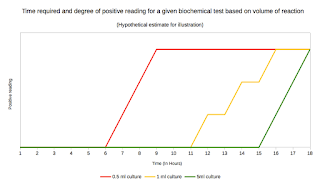Increase in Influenza cases: 2015
Greetings
In my previous post, I had written about an Enterovirus outbreak, that has found some great attention from the scientific communities. It seems that infection outbreaks, receives media attention far more than it should. Recently, the media has caught with another outbreak- Influenza in India. There is supposedly emergence of H1N1 infections in Indian population. However, the media has to falied to note that this is not an abrupt case. In a NCDC news letter published in April 2013 (Link), In India, from May 2009 to Feb 2013, a total of 24,5239 persons were tested at NCDC for H1N1 and 54,329 were found positive, with 3362 deaths.
H1N1 or swine flu is known for its pandemic appearance in 2009. This was the second time the world had seen the H1N1 pandemic. The first one in 1918 had left an everlasting fear with the scope of outbreak and deaths. To much of the relief the 2009 pandemic was mild with a much lower mortality ratio. Subsequent analysis and estimates agreed that there was globally less than 3,00,000 deaths in the whole world and most these deaths occurred in Africa and Southeast Asia. Subsequently it had been argued that a case fatality rate of 2–3% was not as grave as it was projected to be and that it was mainly a problem in immune compromised status. In 2013, H7N9 was all over the news as potentially a new strain. However, a rapid health care commitment and international attention had put excellent breaks on the infection. Subsequently there have been official report pop-ups of a variety of strains in distinct geographical areas of a variety of influenza strains but none with news making potential.
 |
| Fig 1: Influenza Outbreak cases and Deaths. |
The lack of surveillance program and clear official reports have hindered my ability to clarify the current situation as to the numbers. As the best I could make from press releases, as of on Feb 4, 2015 the estimates are from a total cases of 2038 with 191 deaths (9.37% case fatality rate). The figures are depicted in Fig 1. I have shown only the states where the numbers seem to be high. Other cities have reported cases as can be seen from news reports.
It is not clear what the situation represents. There are many questions as to why there is an apparent rise in Influenza cases. One of the suggestion is that it is probably due to an unusual cold temperatures this year. The idea looks quite promising and may explain the increase in number of cases*. Without a clear genetic analysis of at least few strains from this outbreak, it is hard to rule out new mutations. The mortality rate is not a worry (as you can see from the Fig 1) but there is a clear alarm bell set of in the country.
Unlike the practice in developed countries, India don't practice Influenza vaccination as a serious issue. Moreover, availability of Tamiflu (Oseltamavir) is considered as a sufficient cover. Recently there have been huge sets of controversy discussed, regarding the Tamiflu stockpiling for future use. Tamiflu can reduce the severity of influenza in grave cases, but are not effective in infection elimination.
I wish to see a paper as soon as possible from NIV and NCDC as early as possible identifying the genetic epidemiology which can give a lot of insight and aid in further decisions. The data availability on the issue is absolutely zero as you can see below.. No reference papers to cite !!
*Update: I have previously posted that I don't buy the point that unusual cold temperatures can give flu some advantage in spread. However, I read an article in sciencedaily, which sufficiently is a proof of concept. I have rectified the point.





Comments
Post a Comment